
Colombia
Located on the northwest coast of South America, Colombia is one of the world’s most biodiverse countries, full of lush jungles and rivers, and home to the legendary city of gold – “El Dorado”. Its culture, music, dance, and cuisine are globally known for their liveliness. Gather your kids and let’s learn about Colombia!
QUICK STATS
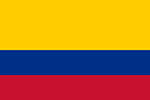
Colombia’s territory consists of the Colombian South American mainland and insular regions in North America, such as the Caribbean islands of San Andréz and Providencia, as well as several Pacific islands.
The Colombian mainland is situated in the northwest of South America. It borders Venezuela to the east and northeast, Brazil to the southeast, Ecuador and Peru to the south and southwest, the Pacific Ocean to the west, and Panama to the northwest. To the north, it is bordered by the Caribbean Sea.
A brief history for kids to learn about Colombia
According to archeological findings, around 12,500 BC, indigenous people first inhabited territories in modern-day Colombia, living as nomadic hunter-gatherers. Between 5000-1000 BC, they gradually transitioned toward an agrarian (farming) lifestyle. They farmed crops such as maize and quinoa and began trading goods like gold, emeralds, cotton, and cocoa with neighboring communities.
Since the 1st century BC, Amerindian tribes established confederations and developed complex political systems. Such groups ruled most of modern-day Colombia, while the Inca Empire reigned in the southwestern areas.
Alonso De Ojeda, one of Christopher Columbus’ companions, arrived in Colombia in 1499 AD.
In 1510, Spanish explorers navigated the Gulf of Urabá and founded the town of Santa María La Antigua Del Darién, the first stable European settlement in the American continent.
Spanish conquistador Gonzalo Jiménez de Quesada established The New Kingdom of Granada in 1536. Its capital, Santa Fe de Bogotá, was founded in the vicinity of a large Amerindian confederation.
The conquistadors made pacts with indigenous tribes encouraging them to fight one another. Soon, the indigenous population in New Granada started to decline. This was mostly due to the increasing population of colonial settlers as well as Eurasian diseases that the indigenous people weren’t immune to.
The conquistadors first brought African slaves to Colombia in the 16th century. The indigenous people were considered subjects of the Spanish crown and could not legally be enslaved.
The Viceroyalty of New Granada was established in the 18th century and Bogotá became one of the principal administrative centers of Spanish possessions in the New World.
Colombia issued its declaration of independence from Spanish rule in 1810. Nevertheless, Spanish military forces refused to withdraw from certain areas. After a rebellion led by Simón Bolivár, the Viceroyalty of New Granada became the Republic of Colombia.
The Republic of Colombia was a union of the current territories of Colombia, Panama, Ecuador, Venezuela, parts of Guyana and Brazil, and north of the Marañón River.
Colombia in more recent history
Due to political instabilities, this union of the Republic of Colombia collapsed, and modern Colombia emerged from its dissolution. Political instabilities persisted in the country, leading to several civil wars.
After years of mounting tensions between the liberal and conservative political parties, the National Front coalition formed, ending a long period of violence
Low-intensity armed conflict between government forces, leftist guerrilla groups, and right-wing paramilitaries began in the 1960s. It escalated in the 1990s, with the United States of America supporting right-wing military forces in the struggle against communism.
Eventually, in 2016, the Colombian government signed a peace treaty with FARC-EP, one of the leading left-wing guerilla groups.
Colombia’s economy is the third-largest in South America, and many consider its healthcare system the best on the continent.
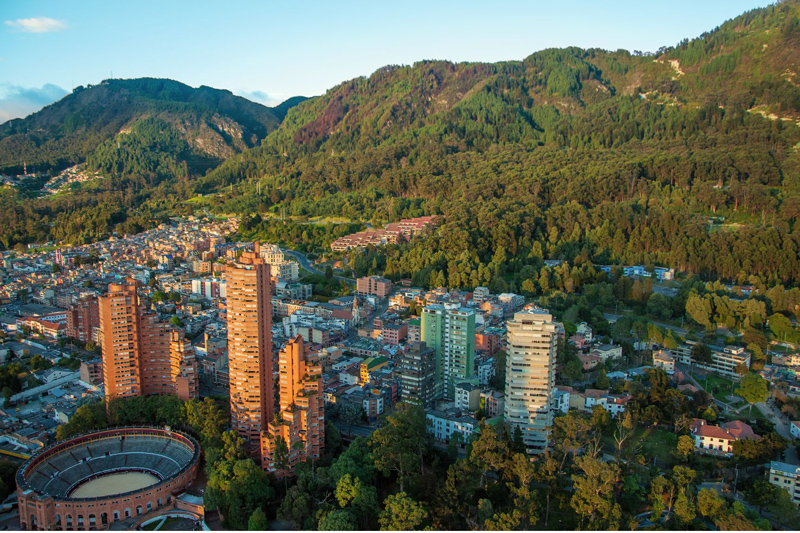
Fun facts about Colombia for kids
- In the spirit of nationalism, all of Colombia’s radio stations and television channels must play the country’s anthem every day at 6 am and 6 pm.
- With more than 1800 confirmed bird species, Colombia is the world’s most diverse country for avifauna (birdlife).
- Caño Cristales, also known as “the river of 5 colors,” is a freshwater river whose aquatic plants have created a red, blue, orange, yellow, and green flowing stream.
Colombian food
The diverse flora and fauna, climate conditions, and various ethnic groups of Colombia all influence the cuisine. You can see European, Amerindian, Afro-Caribbean, and Arab culinary influences reflected in the cuisine.
Cereals (such as rice and maize) and starchy roots (such as cassava and potatoes) are the main sources of carbohydrates.
Legumes, meat (beef, poultry, goat), and seafood (mostly in coastal areas) provide the main source of protein.
Colombians enjoy tropical fruits like guava, mangosteen, and dragon fruit as snacks and use them to make desserts and fruit juices.
Some notable Colombian dishes are bandeja paisa (a full plate combining rice, beans, chorizo, eggs, and more – initially from the Andean region), aborrajados (fried sweet plantain fritters with cheese) and remolachas rellenas con huevo duro (beets stuffed with hard-boiled egg).
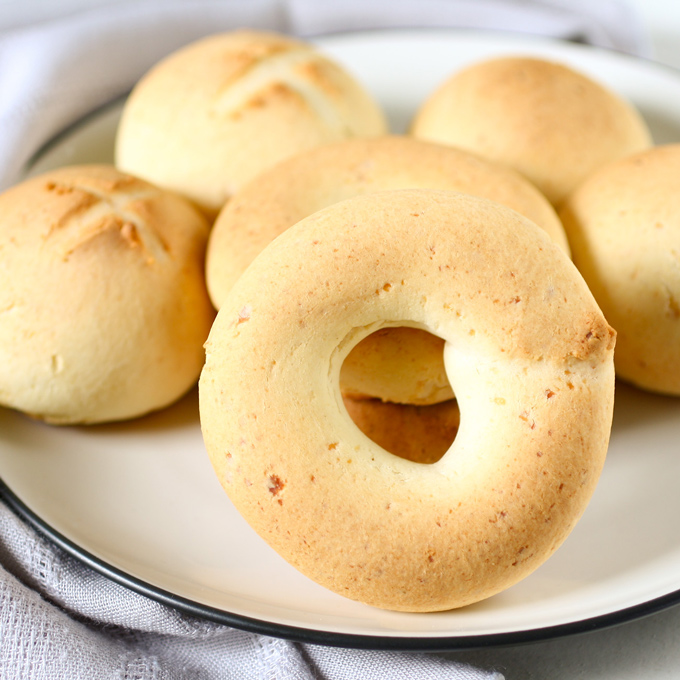
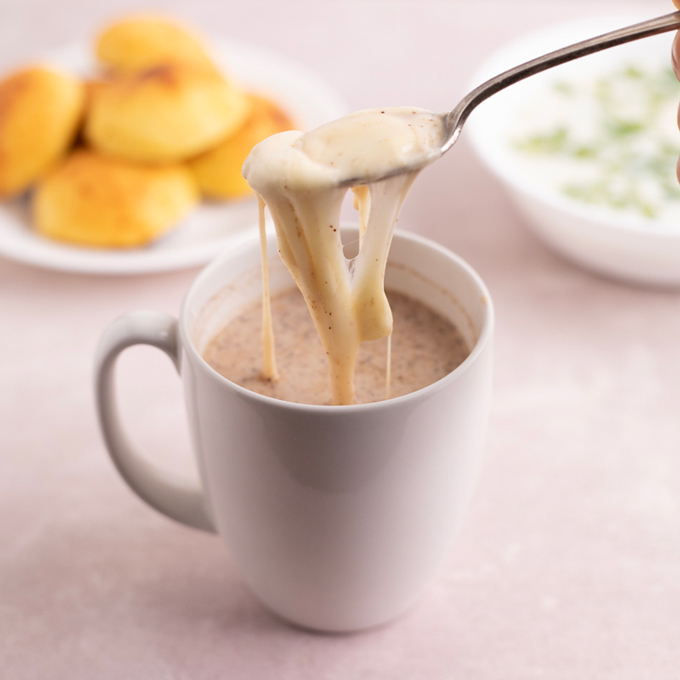

What do Colombians eat? Facts for kids to learn about mealtime in Colombia.
Most Colombians eat 3 main meals daily, with additional snacking times – usually one or two hours after breakfast and between lunch and dinner (El Algo).
Lunch is the main meal of the day. On weekends, they often consume breakfast and dinner a bit later in the day.
It is important to note that the exact meal times and the dishes consumed at each meal may differ per region.
Breakfast (6-8 am)
One of the most popular and traditional breakfast dishes from the Andean region of Colombia is changua (a soup of milk, poached eggs, and herbs). It is particularly common in colder areas, like in Bogotá or Pasto.
Another typical breakfast staple from the northwestern coffee region of the country is calentao. It usually consists of reheated ingredients from yesterday’s leftovers, including rice, egg, beans, potatoes, and other foods such as arepa, chorizo, and ground beef.
Breakfast breads are also common, like almojabanas (a cornmeal cheese bread) or arepas topped or filled with cheese or other fillings.
Colombians enjoy most breakfasts alongside a cup of Colombian coffee.
Lunch (12-1 pm)
As the main meal of the day, lunch is a serious affair in Colombia. It typically consists of 3 courses and might last up to two hours.
Often Colombians first enjoy a soup, like this chicken and rice soup.
The second and main course would include meat, starch, and a vegetable. Arroz con pollo (rice with chicken) is one favorite.
They may conclude the meal with a dessert, like rice pudding, fresh juice, and a Tinto (a small portion of black coffee).
Dinner (7-9 pm)
Many Colombians may consider dinner the lightest meal of the day, with its only purpose to keep one’s stomach full until the next morning’s breakfast.
Arepas, hot sugar cane juice, and bread with cheese are some common dinner choices.
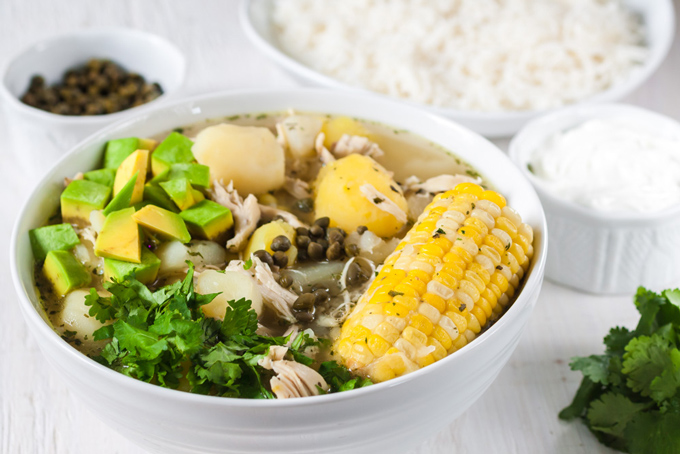
Food etiquette in Colombia
While Colombians often consume breakfast and dinner on their own, they often eat lunch with friends and/or family.
When having a meal with others, it is common to say “buen provecho” (“enjoy your meal”) before starting to eat.
Colombians almost always eat their food with cutlery. When finishing the meal, it is common to leave a small portion of food on the plate, to indicate that one is full.
When eating out, while not strictly being a rule, it is common for the one who extended the invitation to reach out for the bill.
Colombian food by region
Colombia is divided into six culinary regions: Pacific, Amazonian, Andean, Orinoco, Caribbean, and Insular. Each is, in a way, a reflection of the region’s natural conditions as well as the local history and culture. In some regions, European influences might persist more while Afro-Caribbean or Amerindian culinary traits may be more common in other areas.
Amazonian Cuisine
The gastronomy of the Amazonian region of Colombia is incredibly rich, for two main reasons – its biodiversity and geographical location adjacent to Peru and Brazil.
Cassava is the main source of carbohydrates for many in this region. They make wild cassava (yuca) into a crispy flatbread and serve it alongside soups and stews. Their main dishes they flavor with tucupí – a luscious black sauce consisting of yuca and black chili peppers.
Andean Cuisine
The most populated region of Colombia, located right in the center of the country, is the Andean region. This region holds onto a unique gastronomy – a mixture of indigenous, Spanish, and African culinary traits.
Locals consume legumes, cheese, and meat. Hearty meals to help them handle the cold weather.
The tamales, a dish of pre-Hispanic origin made of corn dough cooked in banana leaves, are a traditional delicacy from this region (and now are popular all around the country).
Papas chorreadas is a side dish from the region that features the native potato in a cheesy and creamy sauce.
You also find dishes with European influences favored here. Ajiaco, for example, is a renowned chicken soup containing Creole ingredients such as potatoes, basil, cream, and capers.
Pacific Cuisine
The Pacific coastal area of Colombia is a haven for seafood lovers, with a large amount of Pacific dishes based on fish and shellfish. In addition, Pacific cuisine is truly unique due to its emphasis on herbal seasonings.
You will find gardens local herbs and vegetables all around the region.
Some local delicacies are aborrajados de pescado (fish patties), pusandao (catfish and coconut milk soup), and refrito (a salsa mixture of tomatoes, onion, chili, achiote oil, and other spices).
Arroz con coco, coconut rice, is a much-loved side dish to go along with the seafood.
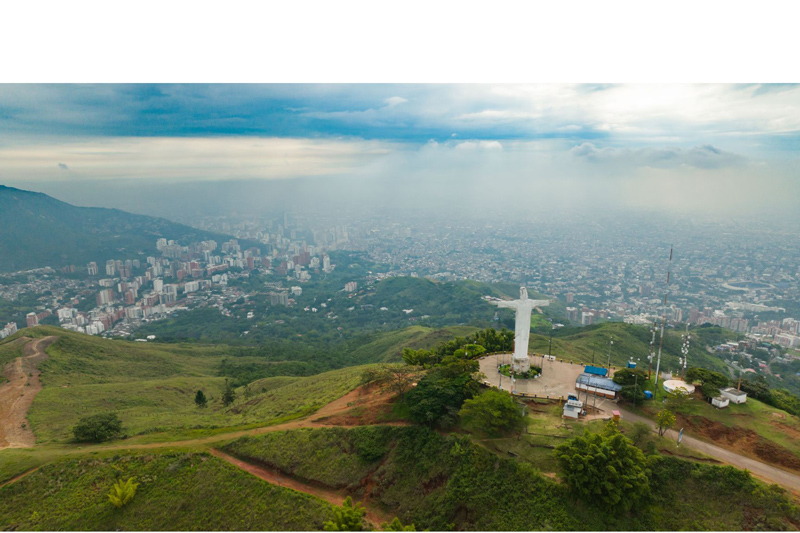
Holidays in Colombia
Discussing holidays is a great way for kids to learn about Colombia. Colombia is known all around the world for its festivals and carnivals. Some festivals the whole nation celebrates and others are regional. It is said that almost every town in Colombia hosts a carnival at least once a year.
With a majority Catholic population, the Catholic calendar of holy days influences many holidays in the country. But there are also national holidays and cultural festivals celebrated throughout the year.
Carnaval de Negros y Blancos (Blacks and Whites Carnival, January)
This celebration is one of the oldest in Colombia and one of the first each year. The festival dates back to the days of Spanish rule, when masters allowed slaves one day to celebrate, January 5th. The masters would paint their faces black and join in the celebration.
This festival fills the streets of San Juan de Pasto with parades, music, and dancing for six days. Participants paint their bodies black and white and parade with huge floats. The festival is now a symbol of unity and mutual respect.
Santa Semana (Holy Week, date varies in spring)
Santa Semana, the Holy Week leading up to Easter, is one of the most important celebrations of the year.
Many towns hold processions, like Popayan, where there are huge processions depicting events from the Bible, candlelit Masses in churches across the town, and the Festival of Sacred Music.
You will find buildings adorned with flowers and streets layered with beautiful carpets made from colored sawdust.
National Day of Lechona (June)
Every June, the people of Tolima (located in the Andean region) celebrate their culinary heritage with the region’s specialty, Lechona – a roasted pig served with white corn arepas and a custard called “insulso“.
The celebrations start around 7 in the morning, as locals enjoy the beloved dish in breakfast restaurants. Later people enjoy lechona again in communal celebrations throughout the region.
Christmas (December 25)
For the majority Catholic population of Colombia, Christmas is the largest celebration of the year.
Christmas celebrations begin on the evening of December 7th with la Noche de las Velitas (“the Night of the Candles”). This celebration is the eve of the Feast of the Immaculate Conception. Different regions celebrate differently, but all celebrations involve candles as Colombians celebrate the arrival of Mary.
Coming closer to Christmas, many participate in the Christmas novenas of prayers and gatherings held for nine days leading up to Christmas Eve.
Christmas celebrations begin at midnight on Christmas Eve and continue until dawn. Children receive presents from el niño Dios (the God Child) at midnight. Treats like natilla (cinnamon custard) and bunuelos (cheese fritters) are popular following the midnight Christmas dinner.
Christmas day is more of a quiet day, enjoying family, and resting from the night’s festivities.
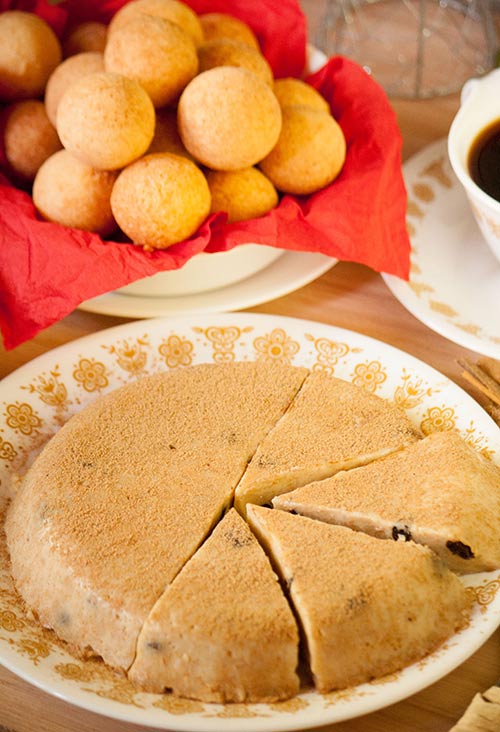
At-home ideas for kids to learn about Colombia
As a part of your homeschool Colombia unit study or as a supplement to your child’s South America unit at school, try some of these ideas at home!
- Get your kids in the kitchen and make some Colombian empanadas. Compare them to empanadas from other parts of Latin America.
- Cumbia, Colombia’s national dance, is beloved by all and is mainly performed at festivals and carnivals. Find a video to learn a few popular Cumbia moves and patterns, put on some music, and let the kids learn about Colombia they burn some energy.
- As you have probably realized, Colombia’s cultural identity consists of many local traditions, varying by region. Have your older kids choose a region or city in Colombia and research its local cultural heritage. Learn about its cuisine, celebrations, music, dance, etc.
- Waiting for Biblioburro by Monica Brown is a wonderful read-aloud story for kids about Colombia.
- Use Word Hippo to look up the pronunciation of specific words in Spanish.

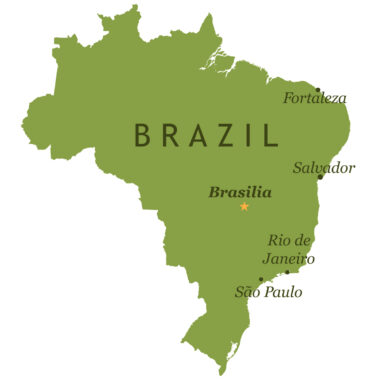
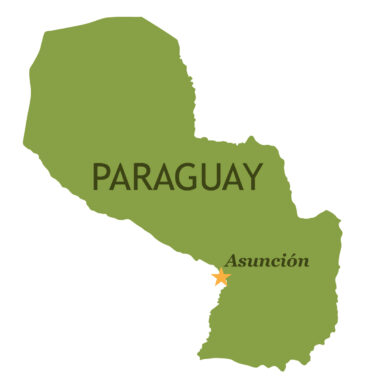
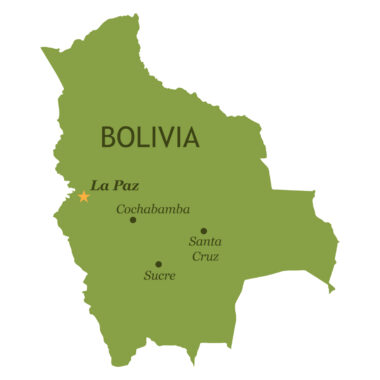


Have a Question/Comment?